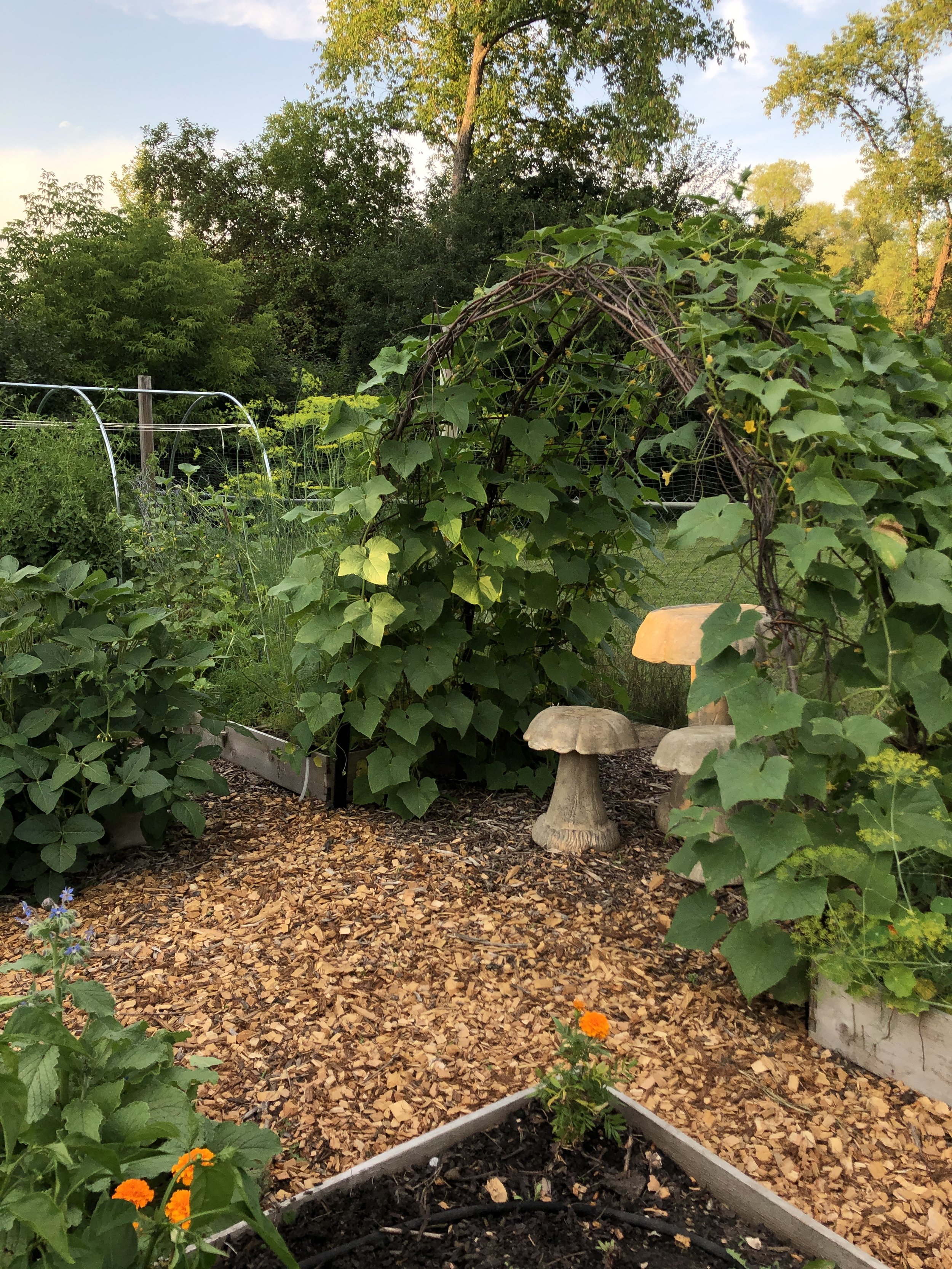Growing microgreens is a great way to get that fresh harvest fix when growing outdoors is not an option.
The following information on materials and method was largely informed by the book Indoor Kitchen Gardening by Elizabeth Millard. You will see in the photos that kids love helping on these types of projects – if they can do it, so can you!
Materials
A tray or container
Truly anything will do. Look through your recycling for an old plastic container or if you like, find something cute There should be holes for drainage.
Soil
“Seed-starting” soil is a great medium, as it is sterile and will be less likely to mold. You can use mixes labeled for seed starting, or simply coconut coir. These are available at nurseries and some hardware stores.
Seeds
Seeds intended for sprouting will work best. Pictured above are sunflower microgreens. Other great options are peas, radish, kale, beets, mustard greens, and arugula. Many online seed suppliers carry single crop seed or mixes intended for growing microgreens.
Method
1. Soak your seeds in water for 24-48 hours to speed the germination process.
2. Mix your soil with some water to pre-moisten it before planting. This is a great step to get the kids involved - they can help stir it up in a mixing bowl. The soil should be crumbly, not dripping wet. This will also aid with germination.
3. Fill your container with about 1/2 inch of soil.
4. Densely scatter your seed over the soil.
5. Cover the seed with a very thin layer of soil. Press the soil down to ensure contact between the seeds and soil. Cover the container to retain the moisture – plastic wrap works well.
6. Once sprouts emerge, remove the covering and place the tray in a sunny spot. Keep the soil moist but not wet, carefully watering if needed. Good methods that won’t disrupt the seeds are to either moisten the soil with a spray bottle or water from beneath by dipping your tray in water and allowing the water to soak in through the drainage holes.
7. Harvest the shoots any time after the first two leaves have grown, but before the next set (“true leaves”) emerge. Harvesting at this stage ensures the best taste and texture. To harvest, simply cut the shoots with scissors just above soil level. Rinse and enjoy!

















